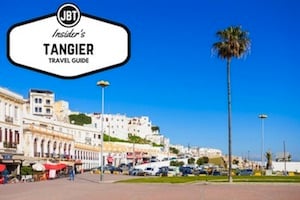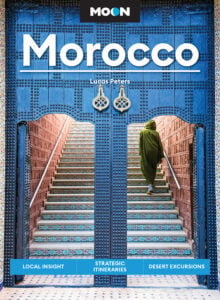Rabat is home to several UNESCO World Heritage sites that showcase the city’s rich cultural and historical heritage. These landmarks are an absolute must for anyone who wishes to visit the city and explore what makes it so special.
For amateurs of history, culture and architecture alike, Rabat is a gem to visit! In the last 20 years, there has been a growing effort to conserve, highlight and reintroduce the cultural heritage of Morocco throughout the Kingdom. Such is the case of Rabat, the capital city of Morocco which has thrived to become a metropolis which effectively balances culture, heritage, nature and development. In 2012, UNESCO officially added many of Rabat’s notable landmarks to its list of protected heritage sites. “Rabat, modern capital and historic city, a shared heritage” is the official UNESCO slogan for the capital. Rabat was added to this prestigious list for two main criteria that give it “Exceptional Universal Value” status:
A place with considerable cultural and influential exchange
The urban ensemble of the city, including its public buildings, green spaces, historic landmarks and monuments is a prime example of adaptation of the modern artistic, architectural and cultural currents of the 20th century. As such, the city has an emergent style that mixes and blends together aspects and influences from many major civilizations including the Islamic, Hispano-mauresque, and European civilizations.
An eminent example of architecture representing a significant period of Human history
The architecture of the city is a unique model of clear and rational design and urban modernism and was designed to included neighborhoods with specific and determined functions. The city was also designed with advanced sanitary infrastructure including water transportation systems, and plenty of well placed green spaces and vegetation which not only make the city very lush but also help provide the city with above average air quality. Perhaps the most important of these is the ‘Green Belt”, which is a forested area that goes around the entirety of the city and limits its expansion.

As you wander through the bustling streets of Rabat, you can’t help but feel the weight of history all around you. This vibrant city, located on the Atlantic coast, is not only the political and administrative center of the country, but also a hub of cultural significance. The history of Rabat stretches back over 2,000 years, and the city has been shaped by a diverse range of influences. From the ancient Phoenicians to the Arab dynasties that ruled over Morocco for centuries, Rabat has been a melting pot of cultures and traditions. Today, visitors can explore a wealth of architectural treasures that bear witness to this rich heritage. Over its quick expansion in the early 20th century, great care taken to preserve existing buildings and heritage sites, giving Rabat its modern yet historic feeling which makes it so distinct. It is no surprise then that Rabat has been recognized by UNESCO as a World Heritage site.
Don’t miss these Rabat UNESCO World Heritage landmarks during your visit:
The Kasbah of the Udayas
The Kasbah of the Udayas is a fortified citadel located on the banks of the Bouregreg River, just outside the walls of the Old City of Rabat. It was built in the 12th century during the Almohad dynasty and served as a military stronghold to protect the city from invaders. It has since served as a stronghold and as a home to Arab tribes, Andalusian immigrants, pirates as well as some of Morocco’s most powerful Sultans. The Kasbah is characterized by its white-washed walls and blue painted details, which are a distinctive feature of traditional Moroccan architecture. Today, the Kasbah is a popular tourist destination and is home to several museums, gardens, and restaurants. The Kasbah was also recently renovated and restored making it more enjoyable as well as more accessible. The views from the very top, overlooking the ocean are some of the most beautiful and unique in the city.

The Hassan Tower
The Hassan Tower is a minaret that was part of an unfinished mosque that was built in the 12th century during the Almohad dynasty. The mosque was commissioned by Sultan Yacoub El Mansour and was intended to be one of the largest in the world, but it was never completed due to the death of the ruling Sultan. Legend also says that a major earthquake broke off part of the minaret and permanently halted its construction. Regardless, the Hassan Tower stands at an impressive 44 meters tall and is accompanied by 200 columns that would have been the basis for the intended mosque. It is made of red sandstone and stands as a masterpiece of Moroccan architecture and is one of the most iconic landmarks in Rabat, and Morocco more generally.

The Mausoleum of Mohammed V
The Mausoleum of Mohammed V is a magnificent tomb that was built in honor of King Mohammed V, beloved by the Moroccan people as he led Morocco to independence in 1956. The mausoleum is located next to the Hassan Tower and is an important example of Moroccan architectural heritage. It is made of white marble and features intricate carvings and mosaics. The tomb is still used today as the final resting place of King Mohammed V and his son, the late King Hassan II. The tombs themselves are made from white Onyx, possibly one of the most precious types of marble in the world and are guarded by horsemen wearing traditional clothing that used to be worn by the Sultan’s guards.
The Old City of Rabat (Medina)
The Old City of Rabat, also known as the Medina, is a walled city that dates back to the 17th century. It is a maze of narrow streets and alleys that wind their way through the city, revealing hidden treasures at every turn. The Medina is home to many historic buildings, traditional souks, and bustling markets. Visitors can wander through the streets, explore the souks, and experience the vibrant atmosphere of this ancient city. One very important feature of the Medina is that even if if dates back to the 17th century, people still live in it today. This does come with some challenges as for example it is a car and motor vehicle free zone and, obviously, most of the electric and plumbing infrastructure had to be added later on. While the people inhabiting the Medina have to adapt to these challenges, it is still impressive to see people living in the same houses and walking the same streets as the ancestors, centuries ago.

The Chellah Necropolis
The Chellah Necropolis is an ancient Roman city that was abandoned in the 12th century. It is located just outside the city walls of Rabat and is a complex of ruins and tombs. The site is now a popular tourist attraction and is known for its beautiful gardens, ancient walls, and impressive architecture. Visitors can explore the ruins and learn about the rich history of this ancient city. After passing through the masterfully restored octagonal gate and the walls erected by Sultan Abu al-Hassan Ali, you will go down along a pleasant paved path lined with trees of various species and fragrant flowers. Chellah offers magnificent views at sunset and is illuminated at night. It is also now home to many cultural events and festivals, one of the most famous being Jazz au Chellah.
Rabat is also home to a wealth of museums and galleries that showcase the country’s rich cultural heritage. The Museum of Moroccan Arts, for example, is a fascinating space where visitors can learn about the intricate craftsmanship of Moroccan artisans. The museum houses a stunning collection of traditional ceramics, textiles, and woodwork, and visitors can watch demonstrations of traditional crafts in action. The Mohammed VI Museum of Modern and Contemporary Art presents a large collection of Moroccan and African modern art pieces including paintings and sculptures amongst others. The numismatics Museum shows the evolution of minted money from Morocco and other countries with an incredible collection funded by Bank Al Maghrib. Finally, the museum of civilizations offers a view into the different civilizations and peoples that have called the area home.

Today, Rabat is a city that embodies the rich history and cultural diversity of Morocco. From its ancient ruins to its vibrant markets and bustling streets, this city is a treasure trove of experiences for any traveler interested in exploring the country’s past and present. It is no wonder that UNESCO has recognized Rabat as a World Heritage site, and visitors to the city are sure to leave with a newfound appreciation for the beauty and complexity of Moroccan culture and a reminder of the importance of preserving our shared history for future generations.
About the Author

Omar is an American-Moroccan who grew up in Washington DC before moving to Morocco, where he has lived in a few different places including Fez, Meknes, Ifrane and Rabat. Omar always keeps one foot in each country and is very comfortable navigating through both cultures. Omar currently lives in Rabat working in the development sector and pens the occasional deep-dive travel article. He has been working with Journey Beyond Travel since 2022, where he leverages his know-how to help travelers plan the trip of a lifetime… and a few of his own journeys as well.









